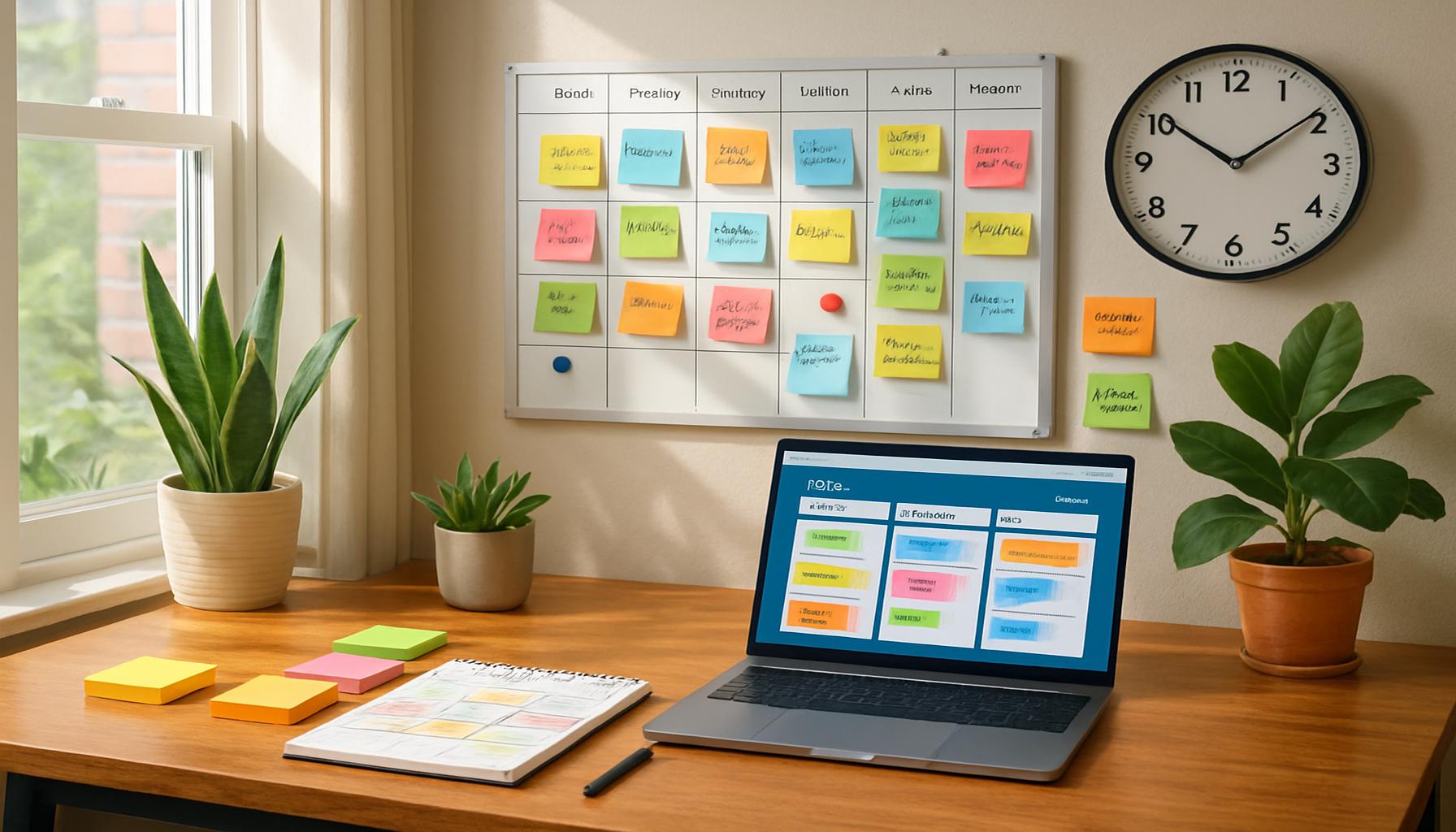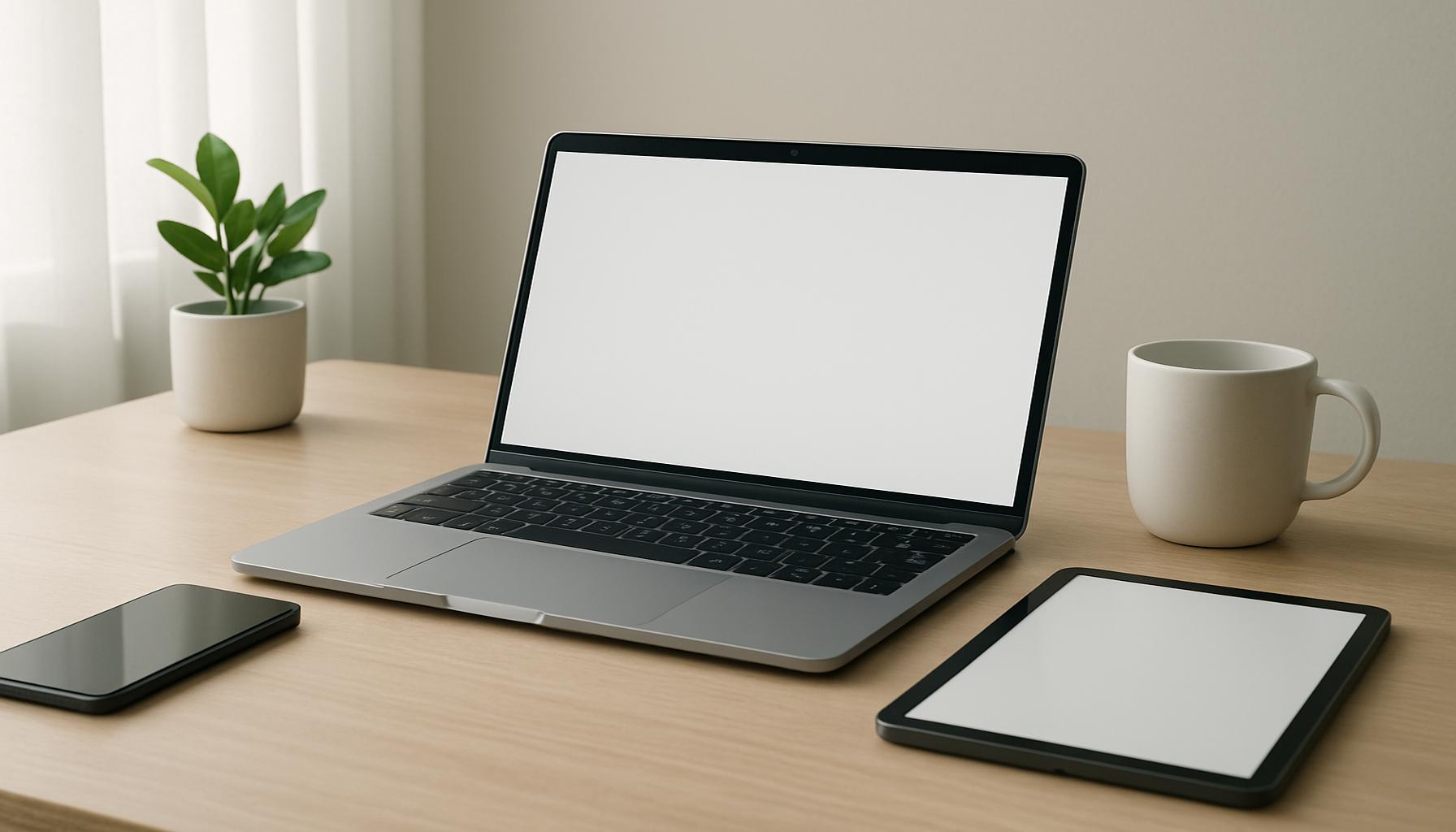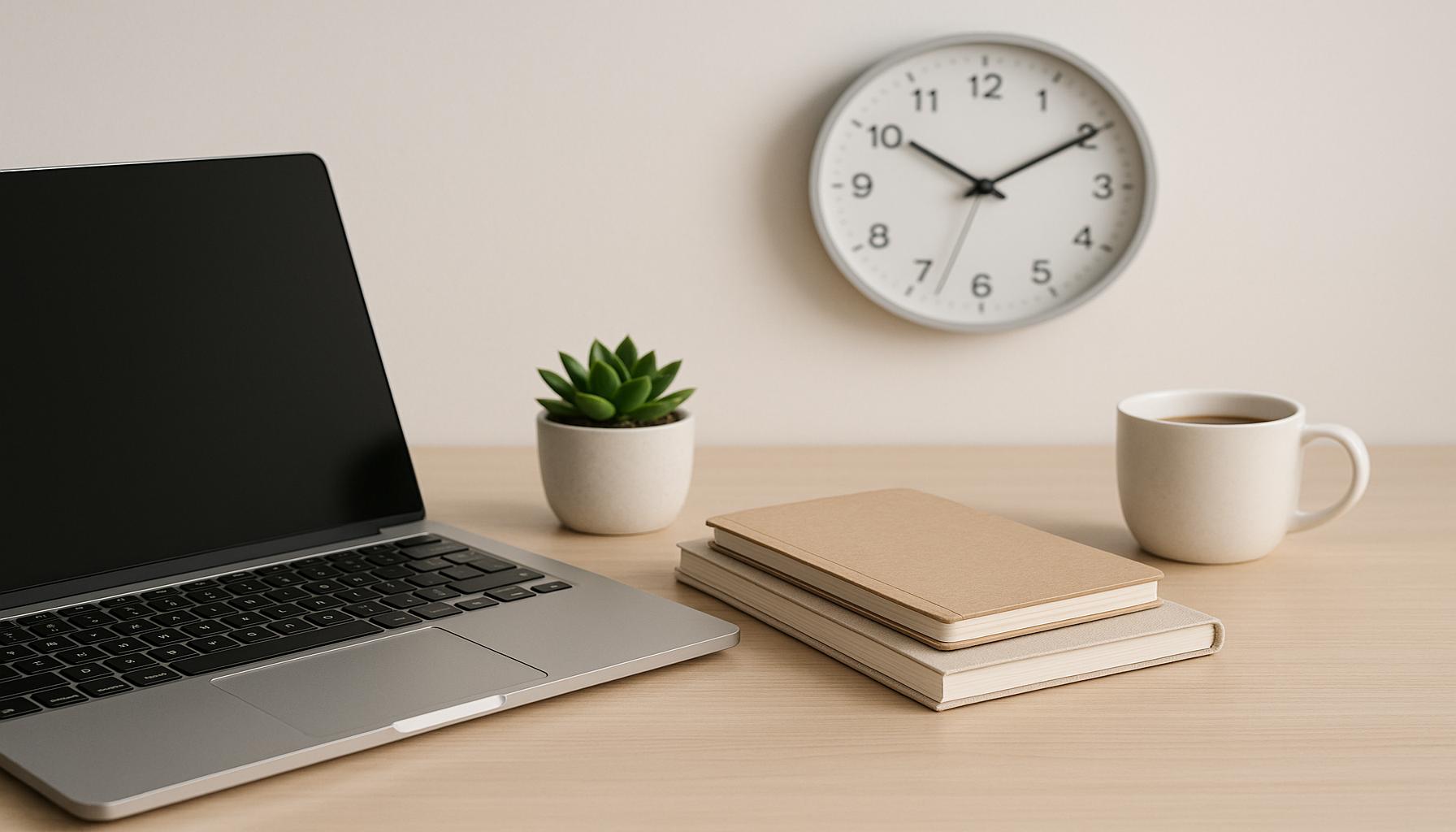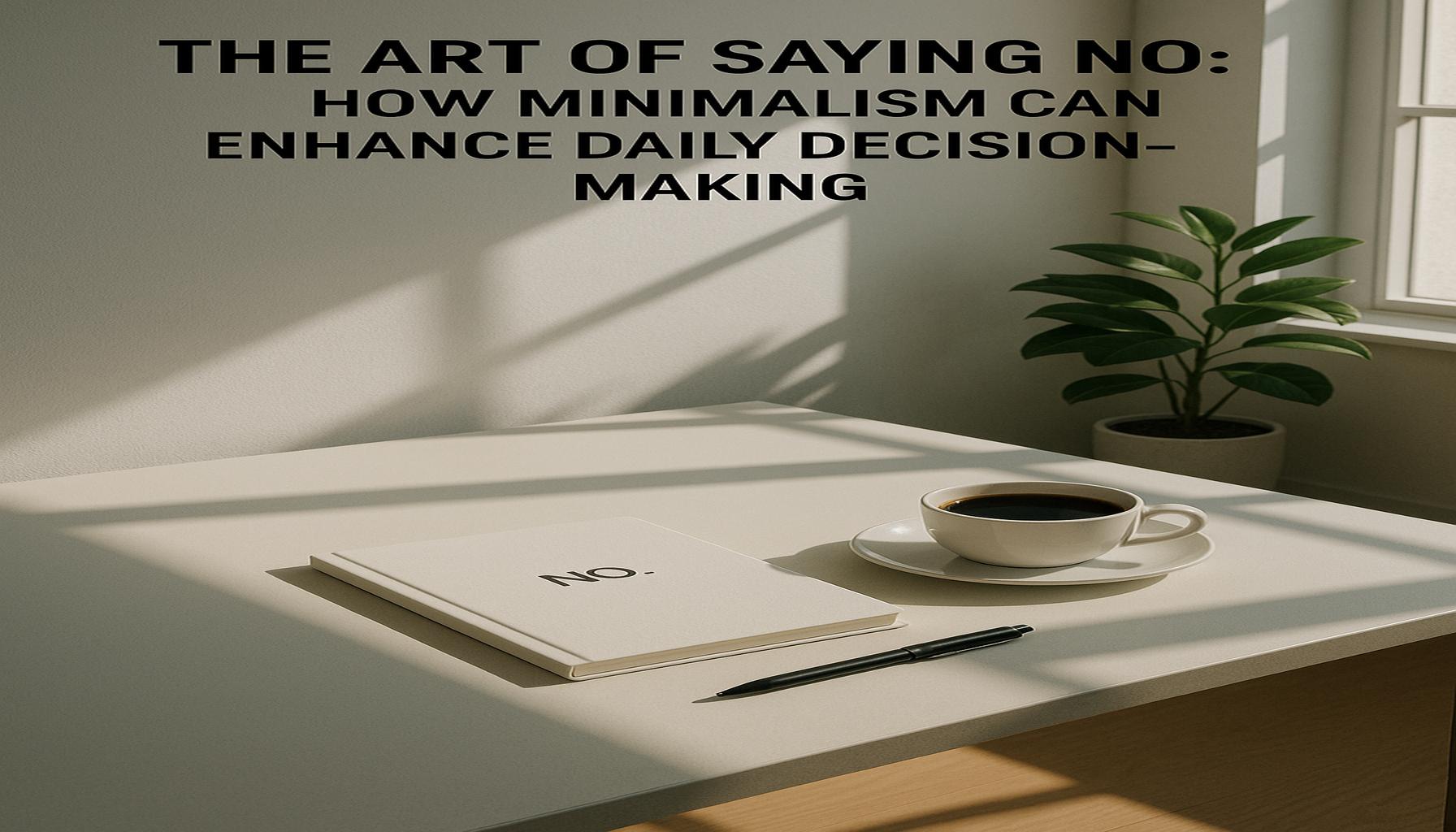Personal Organization Strategies to Maximize Daily Efficiency

The Importance of Personal Organization
In an era where every moment counts, the ability to manage time effectively cannot be overstated. As individuals juggle various commitments—be it work, family, or personal pursuits—the quest for enhanced productivity becomes paramount. Adopting personal organization strategies can provide a framework to not only boost efficiency but to also cultivate a more balanced lifestyle. By consciously organizing tasks and responsibilities, you have the potential to reclaim hours lost to disorganization and distraction.
Exploring Effective Strategies
Let’s explore how specific methods can dramatically reshape your daily routine, making each day not just more productive, but also more fulfilling.
- Time Blocking: This method involves dividing your day into distinct sections, each dedicated to a single task or group of tasks. For instance, a professional may reserve the first two hours of the workday for uninterrupted writing or project development, followed by a one-hour block for responding to emails and attending meetings. By eliminating multitasking, time blocking fosters deeper concentration and can lead to a notable increase in the quality of work produced.
- To-do Lists: The simple act of writing down your tasks can be a game changer. Start each day (or week) by creating a prioritized to-do list. Utilizing techniques like the Eisenhower Matrix, which categorizes tasks based on urgency and importance, can help clarify what truly needs your attention. Many productivity apps are available that allow for easy access to these lists on-the-go, ensuring you stay on track no matter where you are.
- Decluttering: A cluttered space can lead to a cluttered mind. Take time to organize your workspace by removing unnecessary items and organizing your materials. Research supports the idea that a tidy environment enhances concentration and reduces stress, allowing you to work effectively. Additionally, consider digital decluttering—organizing files and emails can free up mental bandwidth and make it easier to find important documents when you need them.
Integrating these strategies into your routine not only enhances your productivity but fosters a deep sense of accomplishment. Imagine completing your most pressing tasks early in the day and having the remainder of your afternoon to enjoy time with loved ones or engage in hobbies. This balance can contribute to overall wellness, as you build time for relaxation and personal growth.
Uncovering the Benefits
Are you intrigued by how these methods might apply in your life? Investing time in understanding personal organization strategies can yield significant returns in both your professional and personal realms. Experimenting with different techniques will help you discover what resonates best with your lifestyle and enhances your effectiveness. As you incorporate these changes, you’ll likely notice improvements not just in productivity, but also in your mood and overall satisfaction with life.
Ultimately, the path to mastering time management and personal organization is a personal one, filled with trial and error. Engaging with these strategies can lead you to a more structured, efficient, and gratifying daily experience, allowing for a life where you can truly thrive.

DISCOVER MORE: Click here to learn about the benefits of minimalism
Maximizing Your Daily Efficiency with Personal Organization Strategies
Incorporating effective personal organization strategies into your daily routine can radically transform both your productivity and your overall quality of life. While innovative approaches like time blocking and to-do lists are certainly beneficial, there are several additional strategies that can help you streamline your day and maximize efficiency.
Embracing the Pomodoro Technique
The Pomodoro Technique is a powerful time management method that utilizes focused work sessions interrupted by short breaks. Developed by Francesco Cirillo in the late 1980s, the technique involves working for 25 minutes straight, then taking a 5-minute break. After completing four of these cycles, or “Pomodoros,” you take a longer break of 15-30 minutes. This method not only helps maintain focus but also combats mental fatigue, keeping the mind fresh and engaged throughout the day. Studies show that structured breaks can significantly boost creativity and concentration, making this strategy a popular choice among workers in fast-paced environments.
Setting SMART Goals
To further enhance your organization skills, it’s crucial to set clear and achievable goals. The SMART criteria stand for Specific, Measurable, Achievable, Relevant, and Time-bound. By applying this framework, you can clarify your objectives and ensure that your tasks align with your overarching aspirations. For instance, instead of stating, “I want to get better at project management,” a SMART goal would be, “I will complete an online project management course by the end of this month.” This level of specificity increases your accountability and motivation, steering you towards achieving your goals more effectively.
Utilizing Digital Tools and Apps
In today’s technology-driven world, harnessing digital tools can dramatically elevate your organizational capabilities. Numerous apps exist that cater to different aspects of personal organization. For task management, platforms like Trello, Asana, or Todoist allow for seamless list creation, tracking progress, and collaborators to work together. Calendar applications such as Google Calendar or Outlook provide an easy way to schedule tasks and reminders, ensuring that nothing slips through the cracks. These tools also come with mobile applications to keep you organized while on the move, making it easier to maintain a fluid workflow throughout the day.
- Create a daily schedule: Use your digital calendar to plan your day ahead, slotting time for commutes, work blocks, breaks, and personal appointments.
- Integrate reminders: Set reminders for important deadlines or even for simple tasks like drinking water at intervals throughout your workday.
- Sync all devices: Ensure that your apps sync across all devices, so you can access your tasks and calendar no matter where you are.
By thoughtfully integrating these strategies—including the Pomodoro Technique, SMART goals, and leveraging digital tools—you can establish a framework that boosts your daily efficiency and productivity. The beauty of personal organization lies in its adaptability; experimenting with different methods allows you to tailor your approach to fit your unique needs and preferences, ultimately creating a more fulfilling daily routine.
| Strategy | Benefits |
|---|---|
| Time Blocking | Increases focus and minimizes distractions, allowing for efficient use of time. |
| Prioritization Techniques | Enables effective decision-making on task execution leading to maximizing productivity. |
| Decluttering Workspace | Fosters a clearer mind and enhances creativity, resulting in improved task performance. |
| Using Digital Tools | Streamlines tasks through reminders and automation, ultimately saving time and boosting efficiency. |
In understanding personal organization strategies, it’s crucial to explore robust ways to enhance one’s daily efficiency. Each strategy presents unique advantages, addressing the-frequently overlooked aspects that hinder productivity. For instance, time blocking is not just about scheduling time; it’s about allocating specific periods for focused work that can significantly reduce interruptions. Similarly, utilizing prioritization techniques like the Eisenhower Box or ABC method can reshape how tasks are approached, ensuring the most vital tasks receive attention first. Moreover, a clutter-free workspace is more than aesthetics; it’s about fostering an environment where clarity thrives. By eliminating physical and digital clutter, individuals can unlock not only time but also creative potential. Finally, implementing digital organizational tools, such as task management software or calendar applications, aligns personal efforts with technology, thus repositioning traditional methods of productivity into adaptive, efficient systems. Explore these strategies further to revolutionize your organization approach and experience a cascade of efficiency throughout your daily routine.
DISCOVER MORE: Click here to unlock the secrets of mental clarity
Prioritizing Tasks with the Eisenhower Matrix
Another effective strategy for personal organization is the Eisenhower Matrix, developed by former U.S. President Dwight D. Eisenhower. This method aids in prioritizing tasks based on urgency and importance, allowing you to clarify what demands your immediate attention and what can be scheduled for later. The matrix is divided into four quadrants:
- Quadrant 1: Urgent and Important (tasks that require immediate attention)
- Quadrant 2: Important but Not Urgent (tasks that are significant to your goals but can wait)
- Quadrant 3: Urgent but Not Important (tasks that might distract you from your primary goals)
- Quadrant 4: Not Urgent and Not Important (time-wasters or trivial pursuits)
By categorizing your tasks in this way, you can better focus your efforts where they truly count. This method not only helps you recognize time-wasting habits but fosters a disciplined approach to prioritization, thereby benefiting your overall efficiency and work-life balance.
Establishing Routines for Consistency
The power of routines cannot be underestimated in the realm of personal organization. Establishing consistent morning and evening routines can condition your mind and body to transition smoothly into productive work periods and relaxation phases. For example, starting your day with a routine that incorporates exercise, healthy eating, and goal-setting can heighten your focus and set a positive tone for the day. Similarly, an evening routine might consist of reflecting on your day, jotting down tomorrow’s priorities, and engaging in relaxing activities before bed.
The consistency of these routines not only optimizes your daily performance but also minimizes decision fatigue—a phenomenon where the quality of your decisions deteriorates after a long session of decision-making. As a result, routines automate certain aspects of your life, freeing cognitive resources to tackle more complex challenges throughout the day.
Implementing the Two-Minute Rule
The Two-Minute Rule, popularized by productivity expert David Allen in his book “Getting Things Done,” suggests that if a task takes less than two minutes to complete, you should do it immediately. This principle minimizes procrastination and helps to prevent small tasks from piling up, which can become overwhelming over time. By adopting this simple yet effective rule, you clear your mental space and maintain momentum throughout your day.
For instance, rather than letting emails linger, responding to quick messages right away helps keep your inbox organized and reduces clutter in your mind. This approach can be particularly beneficial for professionals managing multiple projects or responsibilities, as it keeps your focus on larger objectives while remaining responsive to smaller, pressing matters.
Reviewing and Adjusting Your Strategies
Lastly, an essential component of effective personal organization is the practice of regular reviews. Weekly or monthly evaluations of your organizational strategies can help you identify what works and what needs adjustment. During these reviews, reflect on your productivity levels, assess task completion rates, and consider the effectiveness of the tools you use. Such reflections allow for continuous improvement and enable you to adapt your strategies to better suit your evolving needs, ultimately ensuring sustained high efficiency.
By incorporating techniques like the Eisenhower Matrix, establishing routines, leveraging the Two-Minute Rule, and conducting regular reviews, you can create a robust personal organization framework that significantly enhances your daily efficiency. Adopting these practices not only streamlines your workflow but empowers you to take control of your personal and professional life with greater confidence and clarity.
DISCOVER MORE: Click here to enhance your productivity
Conclusion
In today’s fast-paced world, mastering personal organization strategies is essential for maximizing daily efficiency and achieving personal and professional goals. By leveraging techniques such as the Eisenhower Matrix, you can effectively prioritize tasks according to their urgency and importance, ensuring that your attention is always directed where it is most needed. Coupled with the establishment of consistent routines, these methods create a predictable structure that enhances focus and reduces decision fatigue, setting you up for a productive day.
Moreover, implementing the Two-Minute Rule can drastically reduce the clutter of minor tasks that often detract from more meaningful work. By tackling quick tasks on the spot, you maintain momentum and clear your mental space, allowing more energy to be devoted to significant projects. Regular reviews further enhance this process by encouraging you to reflect on your strategies, allowing for necessary adjustments and optimizations that align with your evolving needs.
Ultimately, adopting these personal organization strategies not only increases your efficiency but also empowers you to navigate daily challenges with greater clarity. Embracing these practices will enable you to take control of your time, ensuring that you focus on what truly matters in both your personal and professional life. By committing to continuous improvement and adapting your strategies as necessary, you set yourself up for long-term success and fulfillment.


